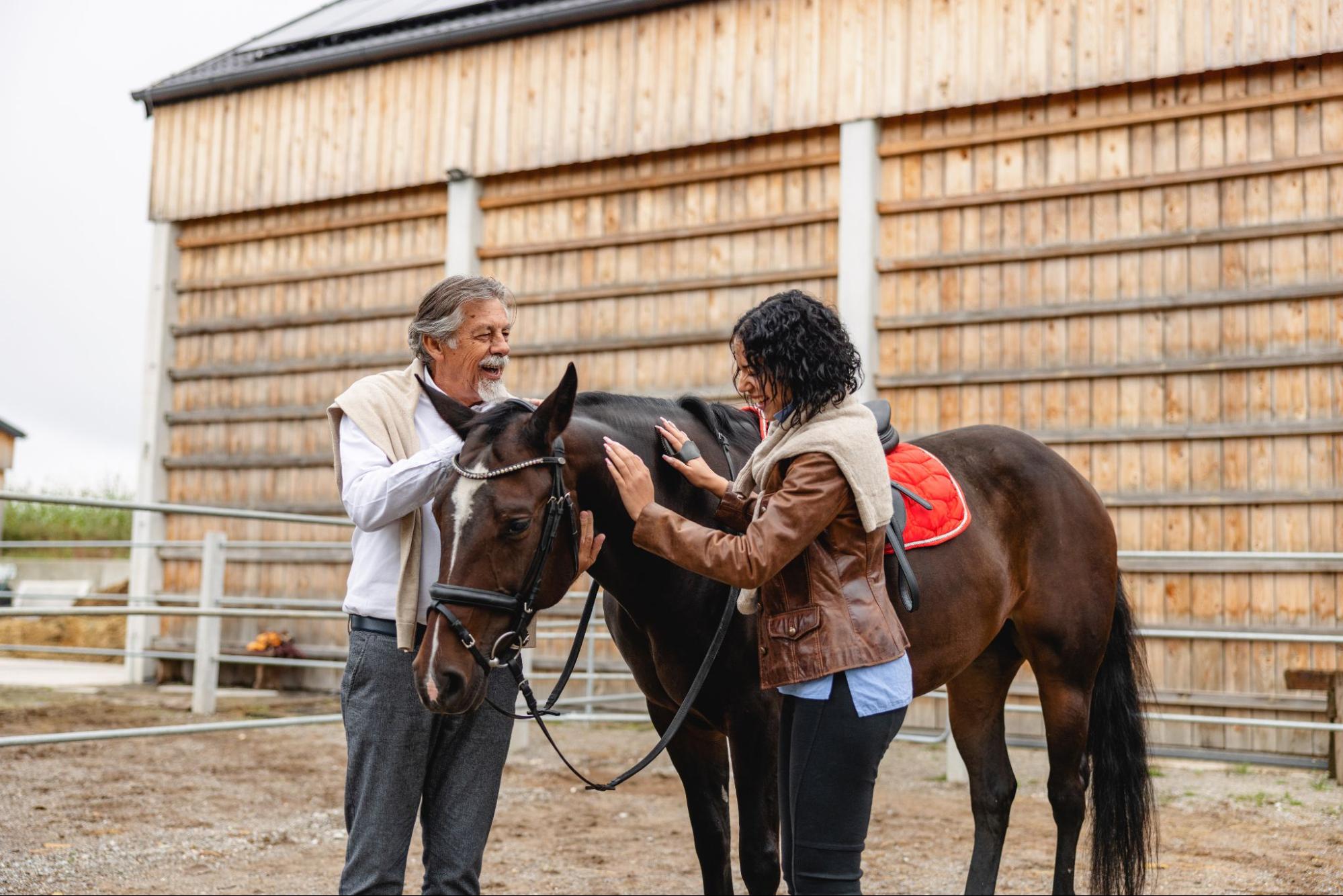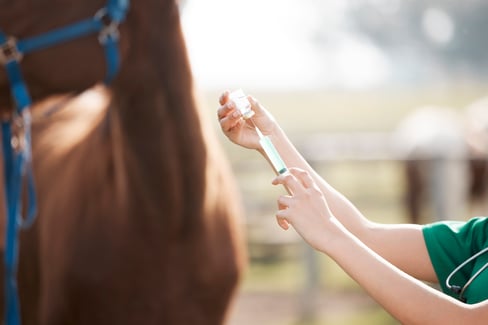Table of Contents
Seeing a horse frolicking in a lush field on a warm Summer’s day is a nice treat. But it’s even better to ride a horse through that field, feeling the day's warmth and enjoying the sights with your equine pal.
But it takes a lot of work and commitment to be a good horse owner.
Horses are complex animals. They need high-quality food, water, and shelter to keep their bodies in top condition, but they also need social interaction and regular exercise to keep their mind healthy as well.
Whether you’re a first-time horse owner or have owned horses before, this article gives insight into common challenges that those new to horse ownership face and different considerations for caring for a horse to ensure that your horse lives a happy and healthy life.
Challenges of Horse Care for Beginners
Horses may make amazing companions, but those new to horse care often face significant challenges. These challenges often surround the cost of keeping a happy and healthy horse and the commitment level of the horse owner in spending time with the horse riding, grooming, and just being around them.
1. Horse Boarding
Not everyone who owns a horse has the space to keep them, and therefore take advantage of the services that horse boarding facilities offer. Regarding horse care, millions of people in North America board their horses rather than keep them on their own property.
Boarding facilities offer a wide range of services and options for horse owners, including:
- Full boarding (where the horse is completely cared for by the facility’s staff)
- Partial boarding (responsibilities for the horse’s care are split between the horse owner and the facility staff—negotiations for who is responsible for what occurs at the start of boarding)
- Self-care (the horse owner rents the space to keep their horse, but all care is the responsibility of the horse owner alone)
Horse stables in North America offer either traditional barn stabling, where the horses are housed under one structure in individual stalls, or outdoor boarding, where the horse spends the vast majority of their time outside with other horses in a paddock with access to an outdoor shelter (a stable should be available for feeding and sheltering on cold nights and if the horse is injured or sick).
Unfortunately, when a horse is stabled too long, they can develop severe mental health conditions due to the stress of being confined to one area. That’s not to say that horses in traditional barn stables are at greater risk of developing mental health conditions; it all depends on the boarding facility itself and the commitment of the horse owner to the well-being of their horse. It doesn’t take a horse care expert to realize that riding your horse 1-2 hours a week and keeping them locked in a stable the rest of the time will result in an unhappy, depressed horse. Plus, just like people, lack of exercise for your horse can lead to lameness issues that require extensive treatment.
When we look at facts about the natural behaviour of horses, it quickly becomes clear why being stuck in a stable all day is far from ideal for general horse health:
- Given the opportunity to free roam, horses will roam around 20 miles (a little over 32 km) per day.
- A big motivation for this movement is grazing. A wild horse will spend the majority of their day in search of yummy grasses and other plants to fill their stomach. The incising, tugging, grinding, and plucking required to get these grasses and plants aids in naturally wearing the horse’s teeth.
- Horses are herd animals that depend on one another for protection and to develop acceptable behaviours, including social and survival skills. Many studies on horse needs have shown that pasture companionship is essential for young horses to learn how to be a horse.
The basic needs of horses surround freedom of movement, the ability to forage, and the opportunity to make friends with other horses. These are the three F’s: Freedom, Forage, and Friends—-the very essentials that make up horse care basics.
Some horse boarding facilities follow natural horse care boarding management practices, which aim to support the natural behaviour of horses as much as possible. Although horses are domesticated creatures, tapping into their natural behaviours and needs and providing an environment that supports those as much as possible results in a happier and healthier horse.
Here are some important considerations for natural horse care boarding that you can implement on your own property or ensure that your horse has through a facility:
|
Natural Boarding Practice |
Description |
|
Paddock Paradise or Track System |
|
|
Group feeding |
|
2. Commitment to Care
Caring for a horse requires significant adjustments for some people to their typical lifestyle. It’s recommended that those unable to keep a horse on their property choose a boarding facility close to their home so that it’s easier to make the daily trip (yes, daily) to see your horse, but even with these recommendations, horse abandonment is a real issue—and the biggest reason it happens is that the horse owner can no longer handle the commitment of caring for the horse, or their financial situation means that they can no longer pay to care for the horse properly. Abandoned horses bring up interesting legal issues surrounding who is responsible for the horse—the boarding facility where the horse is stabled or the owner. In the meantime, the horse still needs to be cared for, so the burden usually falls on the boarding facility.
Before getting a horse, a potential new owner must really consider the time and financial commitment that is involved with taking care of a horse that can easily live for over 20 years. This involves a ton of research, consulting with professionals, and a close look at any lifestyle changes that would be necessary to give your horse the best life that you can.
Horse Care 101
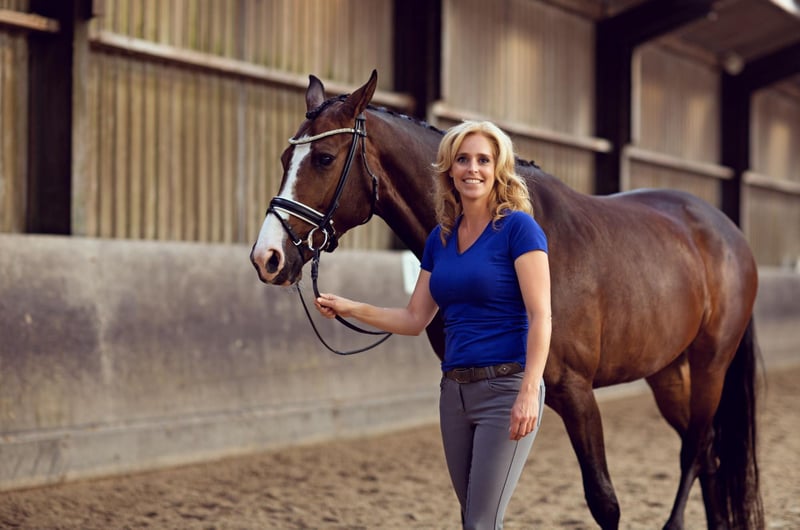
In addition to giving your horse the ability to enjoy a natural environment, there are other important considerations that you need to know to help keep your horse happy and healthy:
1. Horse Feed Care
For pleasure horses and trail horses, good quality hay or pasture is usually sufficient for their health. However, sometimes grain can be added to a horse’s diet if the calories in hay prove to be insufficient.
Giving stalled horses small amounts of hay periodically throughout the day is recommended to keep food moving through their digestive system. Plus, hay replicates the high-fiber grassy diet that a horse would typically eat in the wild, which helps their digestive system work the way it should.
However, hay alone might not be enough for all horses. Horses that are working or competing will likely need additional nutrients to support their active lifestyle. In addition, some nutritional value is lost in hay during the drying and baling process, so depending on where you source your hay from, and its quality, additional supplementation may be necessary.
In addition to hay, horses can also be given:
- Chopped forage, especially in colder months
- Hay cubes or pellets if loose hay is not available
- Soybean hulls
- Mixed “complete” feed, which consists of forage and grains with added vitamins and minerals
- Joint supplements or other dietary equine supplements
Joint supplements are especially important for performance or working horses, as their joints are under more stress and strain on a daily basis. TRI-ACTA H.A. is a great option, as in addition to containing two types of glucosamine that together provide maximum joint mobility, it also contains hyaluronic acid. This acid improves the viscosity of the synovial fluid in your horse’s joints, allowing for smooth and pain-free movement.
Of course, horses should also always have plenty of fresh, clean water available for them to drink. In the colder months, heaters can keep the water at a temperature to maintain the horse’s body temperature.
TRI-ACTA H.A. for Equine
Our maximum strength formula is perfect for horses that are ageing, experiencing arthritis and stiffness, are in training and competition, or under a heavy workload.
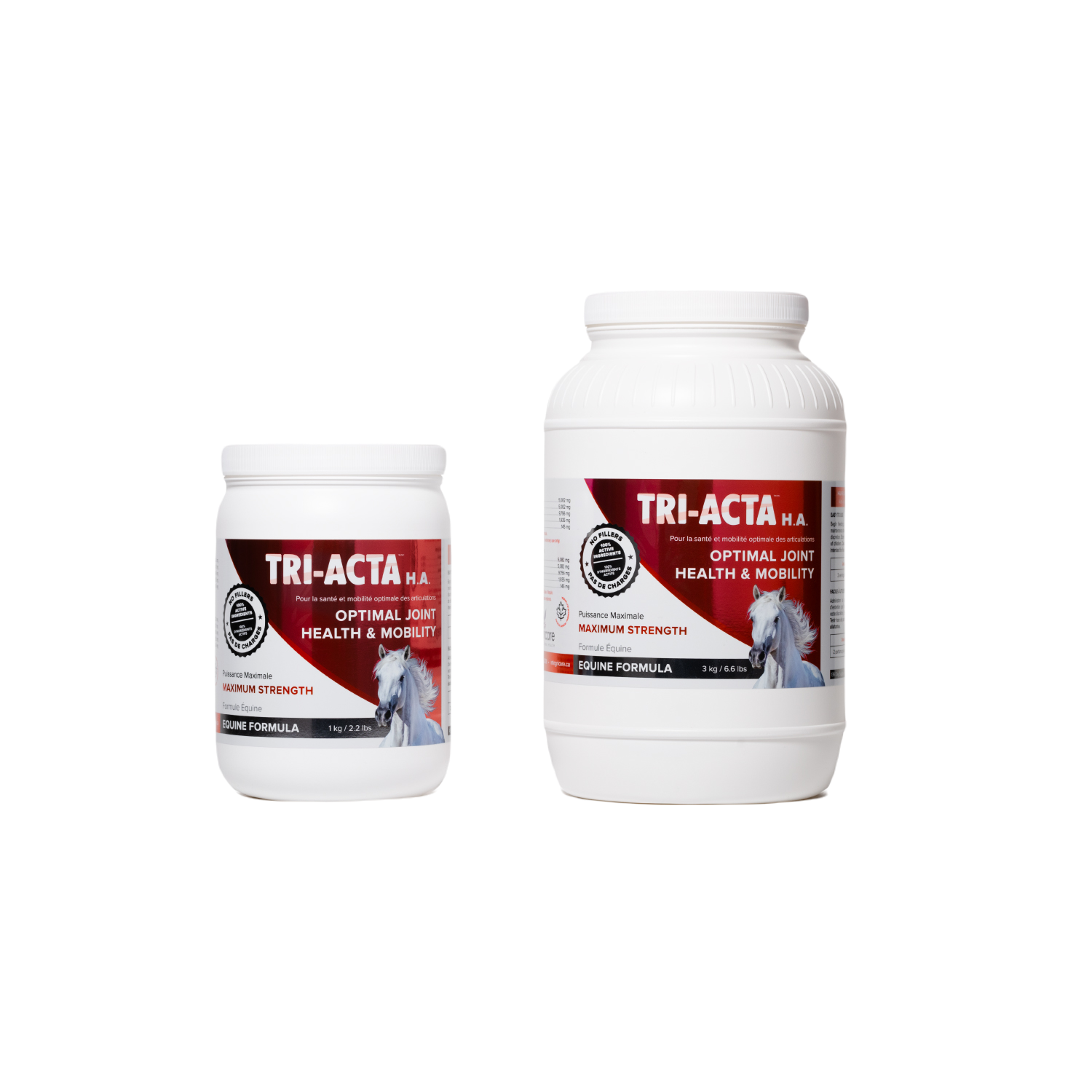
2. Horse Grooming
Horse grooming removes loose hairs that are naturally shed, as well as dead skin cells and debris that get trapped in your horse’s coat. A horse not groomed properly can develop skin conditions due to the dirt, debris, and bacteria trapped in their coat. If these things are left on your horse’s skin, they can cause irritation and potentially result in mud fever or rain scald.
- Mud fever is also called pastern dermatitis. It’s caused by various bacteria that thrive in muddy, wet conditions. Signs of mud fever include matted areas of skin containing crusty scabs, often with lesions underneath. Sometimes there can be a thick discharge between the skin and the scab. Heat and swelling are other potential signs of mud fever, as well as hair loss which leaves raw-looking skin. Signs of mud fever are usually found on the horse’s legs, as they are the area most exposed to muddy conditions.
- Rain scald is also called rain rot or Dermatophilosis and is a skin infection caused by a bacterium called Dermatophilus Congolensis. Usually, this bacterium lives dormant on your horse’s skin, but under wet conditions, it can trigger an anti-inflammatory reaction that results in lesions. Rain scald can be found in numerous places on a horse’s body, including the rump, face, and legs. A thorough full body examination should take place if any signs of rain scald are noticed, as the bacteria could be present in other areas of your horse as well.
To treat either condition, cleaning the affected areas and keeping the horse away from the conditions that caused it in the first place (muddy or wet areas) is essential. If there is heavy rainfall in your area, it might be a good idea to keep your horse in a stable. If your horse does go outside, washing away dirt and mud in the evening before they are stabled is recommended.
For both conditions, good hygiene is the best preventative measure that you can take. A typical horse grooming kit will include brushes, detanglers, shampoo, and other essential tools to keep your horse’s coat healthy and shiny. Grooming your horse not only keeps them clean but gives you a chance to bond with your horse through touch.
Horse Hoof Care
The first question that many new horse owners will likely wonder is whether their horse needs shoes. Horseshoes have been used as early as 400 BCE and are often recommended by equine veterinarians for their many benefits. But wild horses don’t have horseshoes, so why do we put them on our horses?
There are many benefits to using horseshoes for horse hoof care, as outlined in the table below:
|
Benefits of Horseshoes |
Description |
|
Protection from rough terrain |
Domesticated horses often travel on unnatural ground, including concrete and asphalt. A horseshoe protects the hoof from these hard surfaces and reduces the likelihood of puncture wounds from wires, nails, glass, or other debris that may be found on a farm. |
|
Better balance |
Horseshoes improve your horse’s balance and help prevent irregular gait. In addition, horseshoes can help compensate for existing muscle, bone, or hoof issues |
|
Less stress on hooves |
When a horse runs or gallops, pressure is put on their hooves. Horseshoes reduce this pressure, reducing the stress in their hooves, joints, and legs as they move. If your horse participates in racing, rodeos, or other events, then shoeing them is a must. |
|
Reduced wear and tear on the hooves |
A horse’s hooves will get natural wear and tear over time, which increases the chances of cracks, chips, and other damage. Shoes help preserve your horse’s hooves longer. |
|
Improved traction |
Snow, ice, and rain all affect how well your horse is able to move around in different terrain. Horseshoes improve your horse’s traction, helping to prevent slips that could lead to injuries. |
|
Treatment for chronic conditions |
Pain caused by joint degradation can be lessened using specialized horseshoes. In addition to corrective shoeing, it’s also important to give your horse supplements that support their joint health and help strengthen their joints over time. |
|
Protection for working horses |
Working horses often walk over varying terrain and have increased wear and tear on their hooves. Horseshoes help reduce injuries and prevent premature wear on their hooves due to work. |
Horse Tail Care
A horse with a thick, beautiful mane and tail is quite the sight to behold on a pasture. Genetics are a factor in whether your horse is able to naturally grow a beautiful tail, but proper nutrition and a good grooming routine can help improve what they have, just like humans use special hair products to get thicker, fuller hair.
Essential nutrients that assist with horse tail growth include:
- Zinc—Strengthens hair follicles and increases their thickness.
- Biotin—Also known as vitamin B7, biotin stimulates keratin production in the hair follicle, which results in faster, thicker hair growth.
- Lysine and Methionine (amino acids)—help prevent the body from breaking down proteins essential for hair growth.
- Protein—Making sure your horse is getting enough protein is not only essential for their energy levels and overall health, but it’s also important for hair growth.
- Omega 3 fatty acids—Help prevent hair follicle inflammation which can lead to conditions like alopecia and general hair loss.
- Trace amounts of copper—Copper helps stimulate blood flow to the hair follicles, ensuring they get the vitamins, minerals, and oxygen they need to grow.
In addition to making sure your horse gets enough of the essential nutrients that they need to keep their coat healthy, there are grooming practices you can follow to ensure optimal horse tail care:
- Brush sparingly, and only use a brush specific to brushing a horse’s tail. Instead of fully brushing, you can also use a horse care product called a dandy brush (designed to remove debris and keep your horse’s mane and tail free from dust and dander). Using a dandy brush helps your horse not feel itchy and avoid needing to rub their tail out.
- Tangles result in hair getting pulled out, so using a mane and tail detangler when you notice knots and mats in your horse’s tail is a good idea to keep them tangle-free.
- Using a mane and tail conditioner on your horse’s tail can help stimulate hair growth. Keeping your horse’s tail clean and moisturized with conditioning horse care products will also help reduce itching.
- A tail wrap can help prevent the hair on your horse’s tail from breakage and damage during regular activity.
3. General Horse Health Care
Ensuring that your horse’s health stays on the positive end requires you to gain some education on basic care for your horse. Here are some important aspects you need to know:
Horse Wound Care
While more serious wounds that your horse may sustain will require the care of a veterinarian, caring for and treating minor wounds is part of owning a horse.
If you notice a wound near your horse’s joints, you should still contact your veterinarian as bacteria surrounding superficial wounds near the joint tissues can enter the synovial fluid in the joint and cause a serious infection.
With that being said, sometimes a thorough cleaning and bandaging is all that is needed for proper horse wound care. Diluted antiseptic solutions are recommended for horse wound care because full-strength concentrations can be toxic to the tissues you are trying to treat. Use 20–25 ml of chlorhexidine or 10 ml of betadine mixed in 1 quart (about 1 liter) of water.
Horse Teeth Care
Regular horse dental care is essential to the health of your horse. The upper jaw of a horse is actually wider compared to the lower jaw. This results in more efficient crushing and chewing of food. The chewing surfaces of the teeth are facing each other at an angle of 10–15 degrees to enable effective chewing. However, the grinding motion of the molar teeth usually produces sharp points on the outside of the upper molars and the lingual aspect of the lower molars (the surface of the lower teeth facing the tongue). This requires the teeth to be “floated”, a procedure where the sharp edges of the teeth are filed or rasped (using a tooth-rasping tool) to remove them, making the surfaces smoother. Sharp edges on your horse’s teeth can damage the insides of their mouth and cause discomfort.
The mouth of a typical horse changes throughout their life, but the most significant changes occur when they are between ages 2 and 5. Because of this, biannual or annual dental checkups are important to ensure that the horse’s mouth and teeth are growing correctly. However, irregularities in horses’ mouths are most common in the incisor and molar teeth of mature and geriatric horses. Untreated sharp points on teeth can be serious health issues for horses, potentially resulting in mouth ulcers, choking, gastric ulcers, back pain, erratic head carriage when the bit is in the mouth, and more.
Best Horse Care Products
There are great horse care supplies available that make caring for your horse easier. Here are some of our top picks for horse care products:
Grooming: Equestria 8 Piece Groom Kit
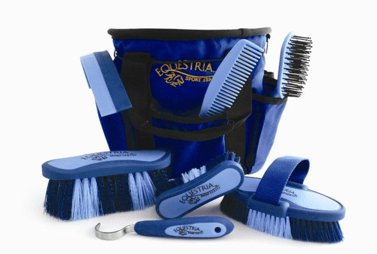
First-time horse owners may have trouble navigating the different grooming products their horse may need. But this affordable grooming kit contains all the basics, so you don’t have to worry about not having the right tool to keep up with your horse’s hygiene. Each kit contains eight pieces, including a grooming tote, body brush, dandy brush, face brush, mane and tail brush, and sweat scraper.
* Priced $106.95 CAD as of October 2023.
Feed: OMNEITY — PREMIX
The nutrient levels in commercially produced grain mixes for horses can be variable. It’s because of this that many horse owners choose to add a supplement to their horse’s diet to ensure that they get the nutrients they need. There can be many reasons why horse owners may choose to feed grain over hay, such as a poor hay production season in their area, or they find that supplemental feeding with grain improves their horse’s overall health.
Addressing every aspect of your horse’s health like hoof growth and structure, tail, mane, and skin, microbiome and gut health, and athletic performance, Omneity includes essential amino acids, Vitamin B, live yeast culture, and more to support your horse’s overall health in each dose. Rather than swapping in additional ingredients like oats, you can simply mix Omneity into your horse’s grain and have peace of mind that they are getting the vitamins and minerals they need.
With almost 500 positive reviews from horse owners, you can’t go wrong.
* Starts at $54.99 CAD for a 5 kg bucket as of October 2023.
Mobility Supplement: TRI-ACTA and TRI-ACTA H.A.
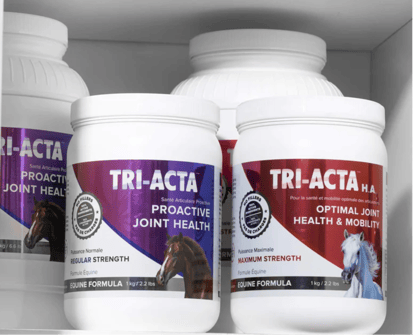
Horses spend their entire lives standing on their legs, so horse joint care is absolutely essential. Giving your horse a joint supplement from a young age helps ensure that their joints remain strong as they age, whether they are a leisure horse or a racehorse.
TRI-ACTA for equine is a great preventative joint care supplement that contains two types of glucosamine for horses, glucosamine HCl and sulfate. Glucosamine HCl is a highly bioavailable form of glucosamine, which means that your horse’s body is able to use it faster compared to glucosamine sulfate. On the other hand, glucosamine sulfate ensures that your horse is getting enough sulfur, which is an essential component of their joint health. Including both types of glucosamine ensures that your horse reaps the maximum benefits the supplement can provide.
In addition to the two types of glucosamine, TRI-ACTA also contains chondroitin sulfate (which assists with cartilage repair and regeneration) and Methylsulfonylmethane (MSM, a natural anti-inflammatory). For horses that require a bit of extra oomph because they are mature or geriatric or have an existing joint condition, TRI-ACTA H.A. (the H.A. stands for hyaluronic acid) is recommended. This supplement contains the same ingredients as the regular strength TRI-ACTA, including hyaluronic acid, which increases the viscosity of the synovial fluid in your horse’s joints, allowing them to move more freely and with reduced pain.
TRI-ACTA H.A. for Equine
Our maximum strength formula is perfect for horses that are ageing, experiencing arthritis and stiffness, are in training and competition, or under a heavy workload.

Summary
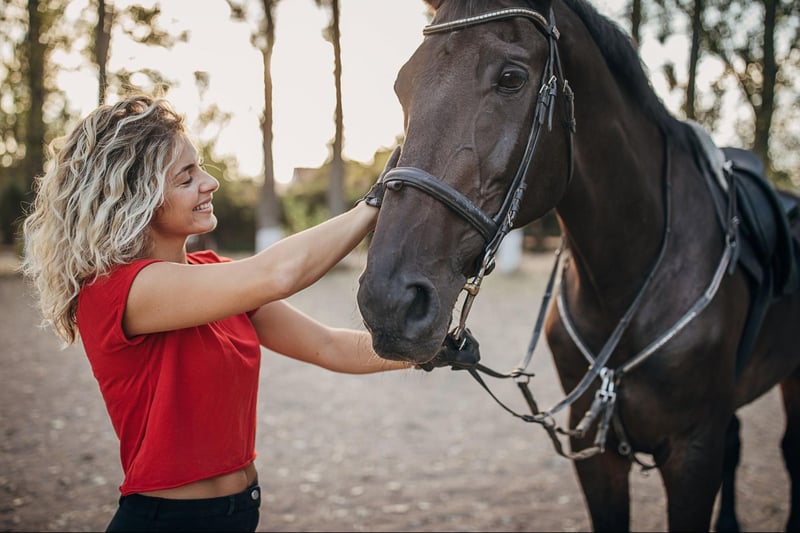
Ensuring the happiness and health of horses involves a comprehensive approach beyond basic necessities. Understanding their natural behaviors and needs, such as freedom of movement, social interaction, and proper nutrition, is key to their well-being. By providing proper boarding, balanced nutrition, regular grooming, and addressing specific healthcare needs like hoof, wound, teeth, and joint care, horse owners can foster a strong bond with their equine companions and ensure a fulfilling, healthy life for these magnificent animals.
To ensure your horse’s joints remain strong well into their golden years, consider adding TRI-ACTA to their daily diet.
Purchase TRI-ACTA online or learn where to buy at a store near you.
Newsletter Signup
Subscribe to our newsletter to receive the latest news and exclusive offers.
.jpg?height=2000&name=Cliick_Integricare-DISPLAY-REVISEDV2%20(1).jpg)
Proactive & Therapeutic Joint Supplements
When given daily, Integricare joint supplements recover bone and joint injuries faster and help prevent mobility injuries from happening in the first place.

